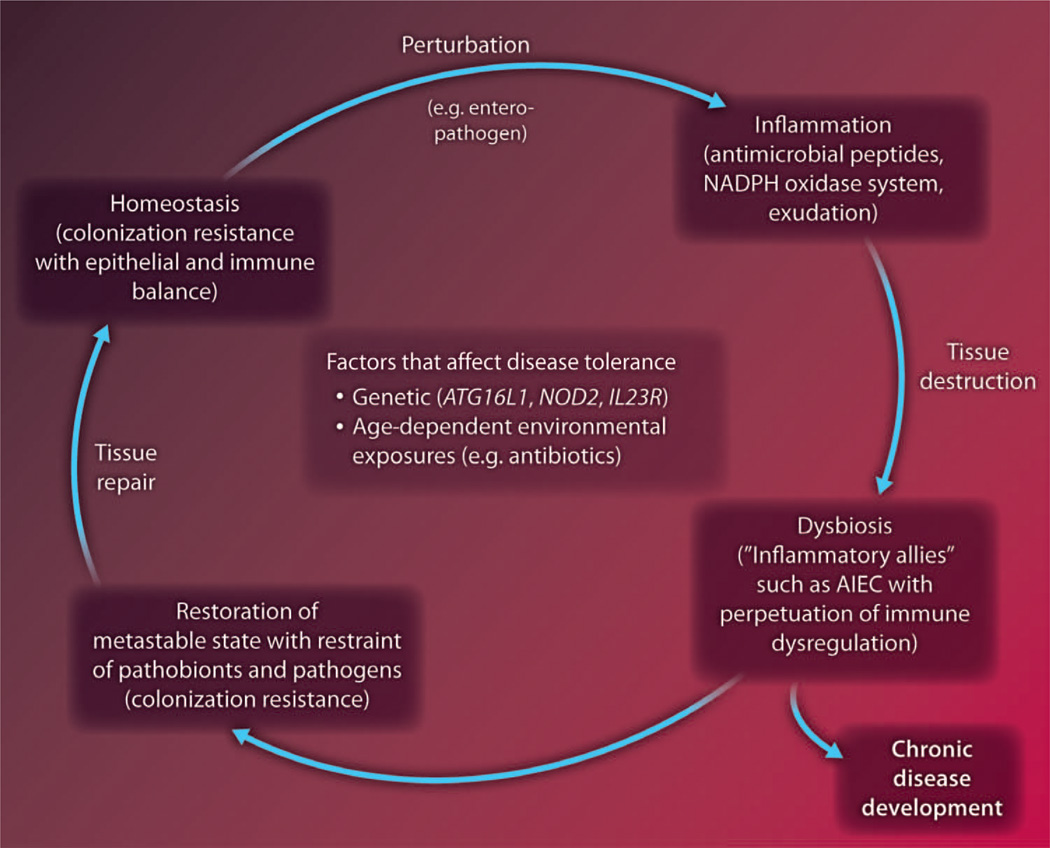Fig. 2.
Cycles of equilibrium and imbalance at the commensal-host interface. Homeostasis is associated with symbiotic commensalism and colonization resistance together with epithelial and immune balance. Perturbations, such as enteropathogenic invasions, disrupt this balance by inducing inflammation, resulting not only in tissue destruction but also breakdown in the state of commensalism and, consequently, dysbiosis. Dysbiosis can be associated with the evolution of pathobionts that function as inflammatory allies (for example, Proteobacteria), which are able to flourish in the inflammatory milieu and further promote inflammation induced by the invading pathogen. Some types of perturbations, such as antibiotics, can lead directly to breakdown in commensalism and subsequent colonization by pathobionts and pathogens that are able to take advantage of the niche (for example, C. difficile). Under normal circumstances, the host can restore a metastable state of commensalism associated with control of pathobionts and pathogens, reestablishment of colonization resistance, and tissue repair. Individuals who are unable to accomplish this develop chronic disease. Factors that affect each of these hypothetical parts of this health-disease cycle include genetics, age, and environmental experiences among others. NADPH, reduced form of nicotinamide adenine dinucleotide phosphate; AIEC, adherent-invasive E. coli.

